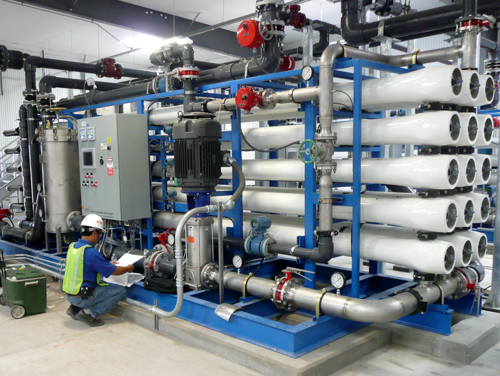Advanced Techniques for Effective PFAS Contamination Removal
The consistent obstacle of PFAS contamination demands the expedition of advanced elimination approaches that can successfully attend to these unsafe substances. Cutting-edge modern technologies, such as innovative oxidation procedures and different adsorption techniques, have arised as promising services in mitigating PFAS from affected environments.
Comprehending PFAS Qualities
Although per- and polyfluoroalkyl compounds (PFAS) have been widely used in various commercial and consumer products as a result of their one-of-a-kind homes, their determination in the atmosphere poses significant difficulties to public health and wellness and security. PFAS are a group of artificial chemicals defined by a carbon-fluorine bond, among the best chemical bonds recognized, which adds to their remarkable security and resistance to degradation. This stability allows PFAS to build up in the environment and living microorganisms, causing potential damaging health and wellness effects.
These very same residential or commercial properties add to their ecological perseverance, as PFAS do not conveniently damage down via all-natural procedures. Recognizing the chemical properties of PFAS is important for establishing efficient methods to handle and alleviate their ecological effect.
Ingenious Remediation Technologies
The persistence of PFAS in the atmosphere has spurred the development of innovative removal modern technologies intended at successfully eliminating these contaminants from affected ecosystems. Amongst one of the most appealing techniques are advanced oxidation procedures (AOPs), which use powerful oxidants to damage down PFAS substances into less harmful substances. AOPs can be customized to target specific PFAS structures, boosting their efficiency.
One more emerging modern technology is using adsorption media, such as triggered carbon and ion exchange resins, which can selectively capture PFAS from infected water. These products have revealed considerable removal performances, although regular substitute and regeneration are necessary to keep performance.
Membrane layer filtration strategies, including reverse osmosis and nanofiltration, are also obtaining grip in PFAS remediation. These techniques can efficiently divide PFAS from water, offering a viable remedy for treating contaminated resources. Furthermore, thermal therapy techniques, such as incineration, can decay PFAS into safe byproducts, though they need cautious management to regulate emissions.
Jointly, these innovative remediation modern technologies represent substantial developments in the recurring battle versus PFAS contamination, offering different approaches to restore afflicted settings and protect public wellness.

Bioremediation Methods
Bioremediation techniques offer an appealing approach to resolving PFAS contamination by taking advantage of the natural capacities of bacteria to weaken these consistent compounds (m270 waste management). This approach involves the usage of bacteria, fungis, and other germs that can metabolize or transform PFAS compounds into less unsafe by-products
Current developments in molecular biology and environmental microbiology have actually improved our additional reading understanding of microbial areas and anonymous their prospective roles in PFAS destruction. Scientists are actively checking out certain strains of germs, such as Pseudomonas and Bacillus, which have demonstrated the ability to break down certain PFAS compounds.
Sitting bioremediation techniques, where bacteria are stimulated directly in polluted settings, can be particularly efficient. This strategy commonly entails the application of nutrients or electron donors to advertise microbial development and activity. Furthermore, ex lover situ approaches, such as bioreactors, permit controlled conditions that can maximize deterioration prices.
Regardless of the promise of bioremediation, difficulties stay, consisting of the intricate nature of PFAS compounds and the need for considerable field screening - m270 waste management. Proceeded study and development will be important to fine-tune these strategies and analyze their efficiency in varied ecological contexts
Adsorption and Purification Approaches
Resolving PFAS contamination frequently includes utilizing adsorption and filtering techniques, which are made to remove these persistent chemicals from water and dirt. Amongst the numerous strategies, turned on carbon adsorption is extensively used because of its high surface location and porosity, enabling reliable capturing of PFAS particles. Granular triggered carbon (GAC) systems are especially favored for treating huge volumes of infected water, while powdered turned on carbon (PAC) can be utilized for smaller-scale applications.
Ion exchange resins also show promise in PFAS elimination, working by exchanging PFAS ions with less hazardous ions in the water. This method has actually shown next effectiveness in concentrating PFAS substances, promoting their succeeding removal. Additionally, membrane layer filtering methods, such as reverse osmosis and nanofiltration, operate by making use of semi-permeable membrane layers to separate PFAS from water, effectively lowering their focus.
While these techniques work, they must be meticulously chosen based on the certain PFAS compounds present and the ecological context. Continuous advancements in products science and design are causing the development of unique adsorbents and filtration systems that boost removal efficiencies and minimize operational prices, thus boosting general removal initiatives.
Regulatory and Plan Considerations
Just how can efficient governing frameworks boost the management of PFAS contamination? Thorough policies are vital to make sure a coordinated and durable response to the difficulties postured by per- and polyfluoroalkyl compounds (PFAS) Rules can establish clear guidelines for surveillance, reporting, and remediating PFAS-contaminated sites, promoting liability amongst industries and public entities. (m270 waste management)

Furthermore, economic incentives and grants can be incorporated into policies to motivate the fostering of sophisticated removal technologies. Policymakers ought to additionally focus on r & d, guaranteeing that arising techniques for PFAS elimination are verified and carried out properly.
Moreover, public understanding and interaction are critical components of any type of governing approach, encouraging areas to advocate for their health and safety. Eventually, a well-structured regulative setting will not only improve the administration of PFAS contamination however likewise promote sustainable methods that safeguard future generations.
Verdict
In recap, the intricacy of PFAS contamination demands the fostering of innovative removal techniques. Cutting-edge innovations such as sophisticated oxidation processes, adsorption strategies, and membrane layer purification have actually demonstrated considerable efficacy in removing these persistent substances from infected water resources. Additionally, governing structures have to advance to sustain the execution of these innovations, making certain secure and reliable monitoring of PFAS contaminants. Continued study and development in this field continue to be critical to addressing the obstacles positioned by PFAS contamination.